How to Compare Loans

Buying a home is one of the biggest financial decisions most people will ever make. While finding the perfect property is exciting, choosing the right loan can have just as much impact on your long-term finances. Comparing mortgage loans is about understanding how each loan fits your needs, both now and in the future. At Crescent Title, we help homeowners and buyers navigate this process with clarity and confidence.
Understand the Loan Types
Before comparing loan offers, it’s important to understand the types of loans available. The structure of a loan plays a major role in how much you’ll pay over time.
Fixed-Rate vs. Adjustable-Rate Mortgages (ARM)
A fixed-rate mortgage offers a steady interest rate and monthly payment for the life of the loan, often 15 or 30 years. This predictability is helpful for budgeting.
An adjustable-rate mortgage (ARM), on the other hand, typically starts with a lower rate that adjusts after a few years. While this can mean savings in the short term, it also carries the risk of higher payments if interest rates rise.
Conventional Loans vs. Government-Backed Loans
Conventional loans are offered by private lenders without government backing. These loans often require higher credit scores and larger down payments but may come with fewer restrictions.
Government-backed loans such as FHA, VA, or USDA loans are designed to help specific groups of buyers. FHA loans offer lower down payment options, VA loans are available to veterans with no down payment, and USDA loans support rural homebuyers. Understanding which ones you qualify for can help expand your options.
Key Loan Features to Compare
Once you know which loan types might suit your situation, it’s time to compare their features side-by-side. Here’s what to focus on:
Interest Rates
A loan’s interest rate has a direct impact on your monthly payment and the total amount you’ll repay. Be sure to look at both the advertised rate and the Annual Percentage Rate (APR), which includes fees and other costs. Even a small difference in the interest rate can cost—or save—you thousands over the life of the loan.
Loan Terms
The term refers to how long you’ll have to repay the loan. Common options include 15-year and 30-year mortgages. A 15-year loan generally has a lower interest rate and helps you build equity faster, but the monthly payments are higher. A 30-year loan offers smaller monthly payments, making it easier for some buyers to afford, though you’ll pay more interest over time.
Down Payment Requirements
Different loans require different down payments. Conventional loans often ask for 5% to 20% down, while FHA loans may require as little as 3.5%. VA and USDA loans may not require a down payment at all. Keep in mind that a larger down payment can reduce your overall loan balance and help you avoid mortgage insurance.
Mortgage Insurance
If your down payment is less than 20%, you may need to pay private mortgage insurance (PMI) or a similar fee. FHA loans include a mortgage insurance premium (MIP) that typically lasts the life of the loan. Understanding these costs upfront will help you better compare total expenses.
Closing Costs and Fees
Each lender charges different fees at closing, including origination, underwriting, appraisal, and processing fees. These costs can add up quickly. Reviewing the Loan Estimate provided by each lender will help you see the full picture.
Use Loan Estimates for Side-by-Side Comparison
The Loan Estimate is one of the most valuable tools you’ll receive when shopping for a loan. Lenders are required to provide this standardized form, which outlines key information like the loan amount, interest rate, projected monthly payment, and closing costs.
By requesting Loan Estimates from multiple lenders, you can place them side by side and compare key details. Look closely at the "Comparisons" section near the end of the form to evaluate long-term costs, especially the total you’ll pay in five years.
Consider the Total Cost Over Time
While it’s tempting to focus on your monthly mortgage payment, it’s just one piece of the puzzle. The total cost of a loan includes interest, fees, insurance, and other expenses over its entire lifespan.
For example, a lower monthly payment on a 30-year loan may sound attractive, but you might end up paying significantly more in interest than you would with a shorter-term loan. It’s important to balance short-term affordability with long-term savings.
Adjustable-rate loans can also become more expensive over time, especially if interest rates rise. Make sure you understand the maximum interest rate and how often it can change.
Evaluate Lender Service and Reputation
A low rate means little if the lender is difficult to work with. A reliable lender should be responsive, transparent, and easy to communicate with throughout the process.
Read customer reviews, ask for referrals, and check Better Business Bureau ratings to learn more about how lenders treat their clients. At Crescent Title, we work alongside trusted lenders who value professionalism and customer satisfaction.
The Role of Your Title Company
While comparing loans is primarily about choosing the right lender, your title company plays an important role in ensuring a smooth closing. At Crescent Title, we coordinate with your lender, prepare your closing documents, and ensure your title is clear and your ownership is secure.
We also review the lender’s closing disclosures with you to help explain fees and protect you from unexpected charges. Our goal is to make the closing process transparent and stress-free.
Let Crescent Title Help You Close with Confidence
Finding the right loan takes time, research, and careful comparison. Once you’ve selected the mortgage that best fits your needs, Crescent Title is here to help you move forward with confidence. From title searches to final signatures, our experienced team will walk you through every step of the closing process. Contact Crescent Title today to get expert support on your journey to homeownership.

